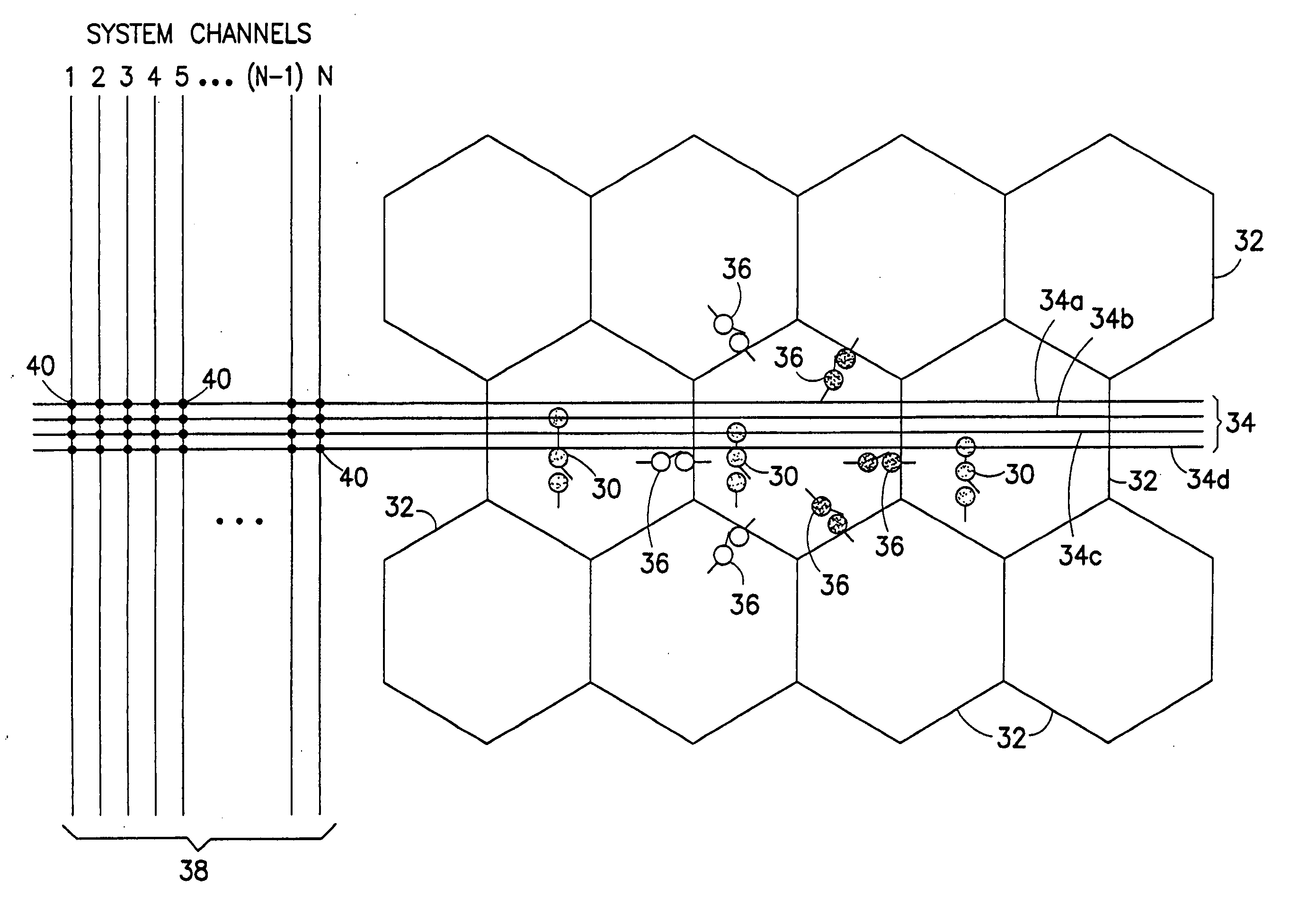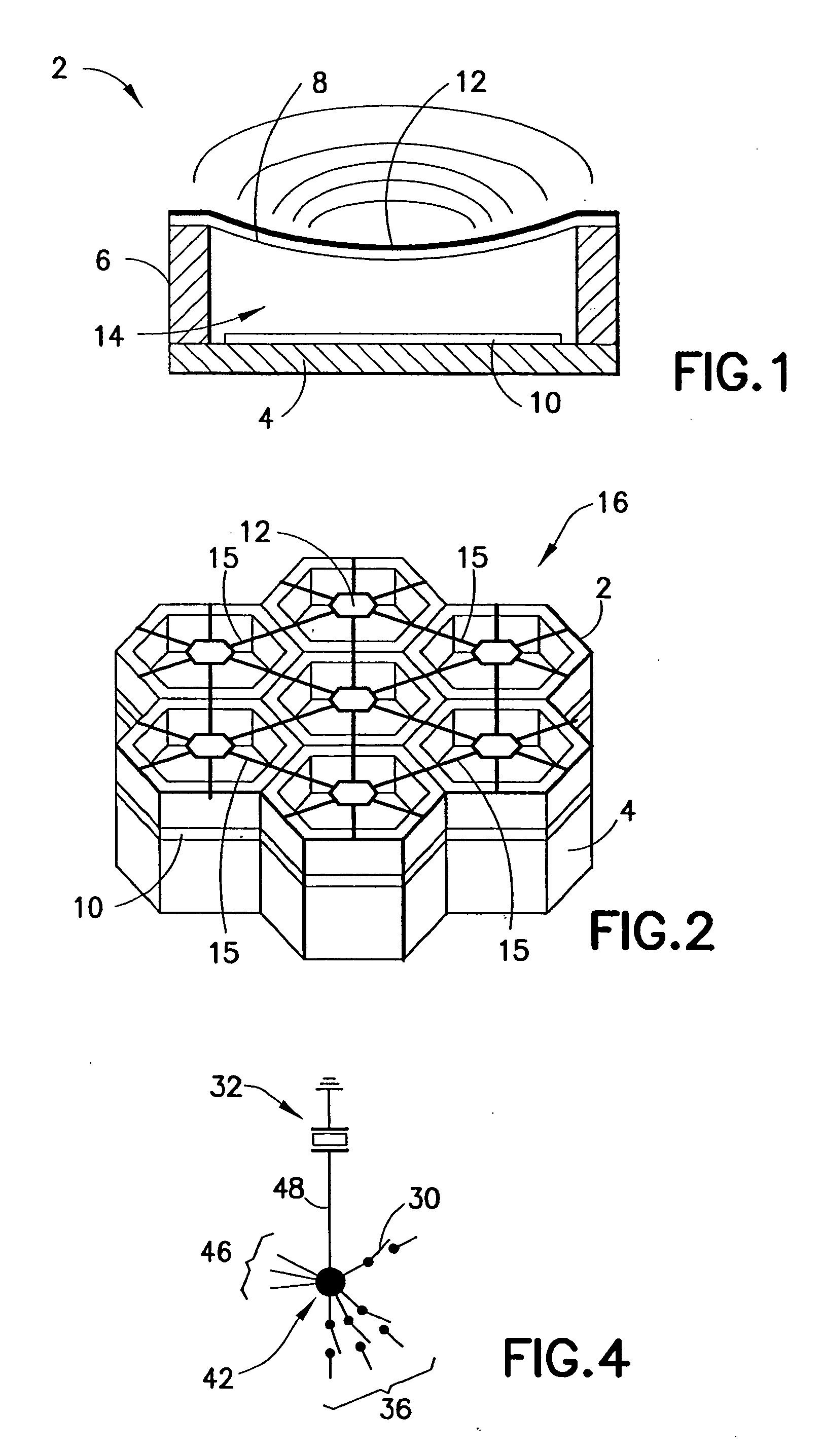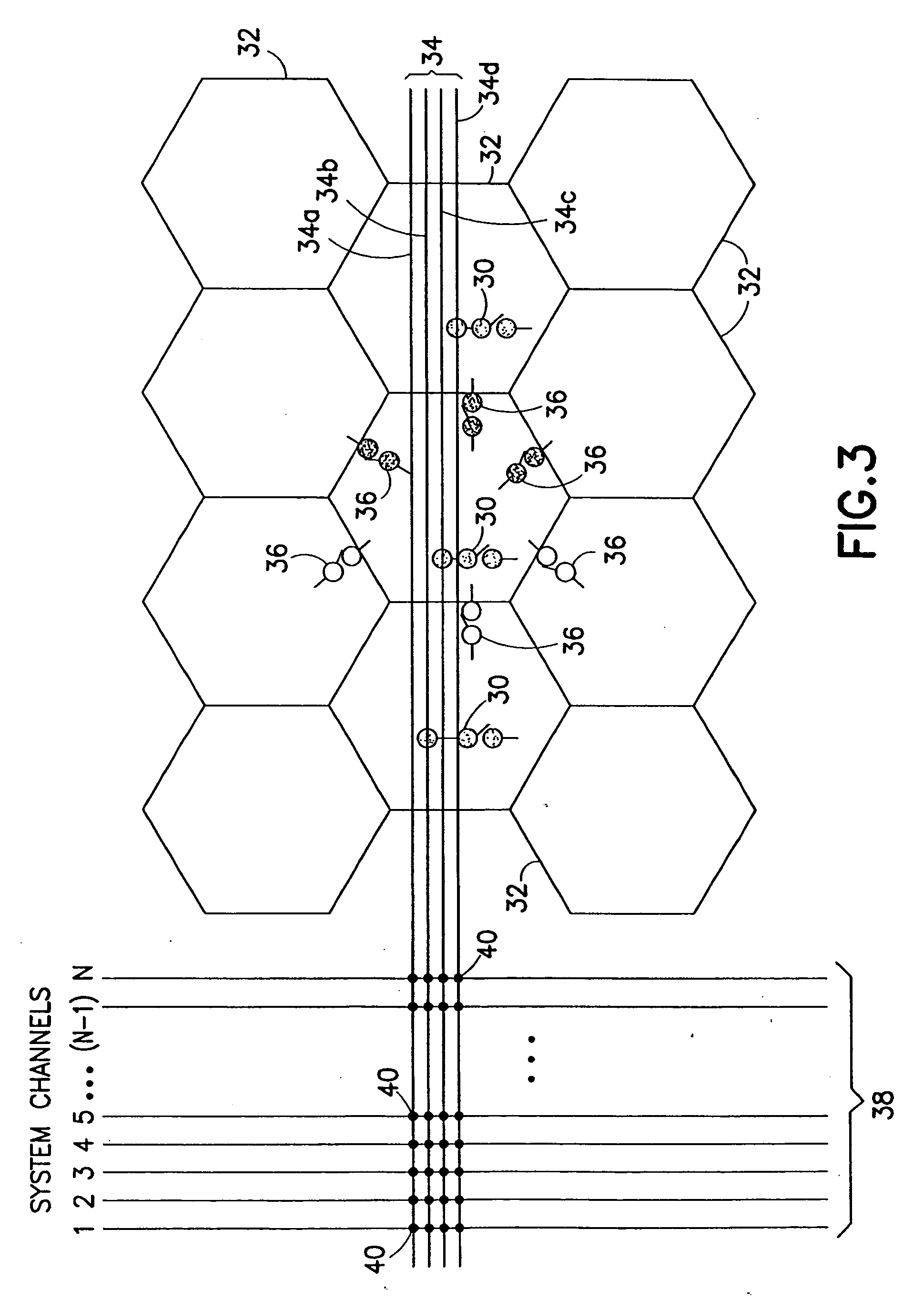Isolation of short-circuited sensor cells for high-reliability operation of sensor array
a sensor array and short-circuited technology, applied in the field of arrays of sensors, can solve the problems of achieve the effects of negligible effect on imaging performance, simple and cost-effective, and substantially degrading imaging performan
- Summary
- Abstract
- Description
- Claims
- Application Information
AI Technical Summary
Benefits of technology
Problems solved by technology
Method used
Image
Examples
first embodiment
[0050] In accordance with some embodiments of the present invention, each acoustical subelement (or element in arrays that do not form elements by combining subelements) is divided into smaller cell groups, a short-circuited cell group of the acoustical subelement being electrically isolated from the non-shorted cell groups. In accordance with the invention depicted in FIG. 7, each acoustical subelement 32 comprises a multiplicity of groups 58 of cMUT cells. In this example, each cell group 58 comprises a row (oriented horizontally) of cMUT cells 2 (eight cells per row) whose top electrodes 12 are connected in series. Each top electrode 12 of a cMUT cell group 58 is hexagonal in FIG. 7. However, the top electrodes may have geometric shapes other than a hexagon, e.g., circles. The bottom electrodes may also be series connected, or a common bottom electrode may be provided for the cells of each row. In FIG. 7, the top electrodes of cells not at the ends of the row each have two electr...
second embodiment
[0054] In accordance with the invention shown in FIG. 11, the top electrode 12 of each individual cMUT cell is connected to the top electrodes of its neighbors by means of electrical connectors that are specially designed to be fuses. More specifically, each of the spokes 15 connecting the vertices of the cell electrode 12 to its neighbors is designed to melt when the current flow therethrough is great enough. In the example depicted in FIG. 11, one top electrode 12′ has been shorted, causing all of its six fuses to be blown. As a result, if a single cell is shorted to ground, that single cell will be electrically isolated from all other cells, as represented by the hatched hexagon 12′ with no spokes in FIG. 11.
[0055]FIGS. 12 and 13 are drawings showing respective top views of two alternative fuse designs for isolating short-circuited sensor cell groups 58 from a bias voltage bus line 50 while minimizing overhead space. FIG. 12 shows serpentine conductors 68 designed to behave as fu...
third embodiment
[0057] In accordance with the invention shown in FIG. 15, each fuse 74 traverses an inactive, but evacuated cMUT cell 76. [However, the inactive and evacuated region that the fuse traverses need not be in the shape of a cell. It could be any other shape.] During the manufacturing process, a layer of silicon oxide (or silicon nitride) is deposited on a silicon substrate. This silicon oxide layer is etched to form cavities for both the active cMUT cells 2 and the inactive cMUT cells 76. The region 78 in FIG. 15 represents a portion of the layer of silicon oxide where cavities are not formed. A layer of silicon nitride (or silicon) is then suspended over the cavities to form the membranes for the cMUT cells. The cavities are then evacuated. The vacuum underneath the inactive cMUT cells 76 improves the thermal isolation of the fuses 74 from the silicon substrate, increasing the likelihood that each fuse 74 will form an open circuit at the specified current rating. Thermal isolation of t...
PUM
 Login to View More
Login to View More Abstract
Description
Claims
Application Information
 Login to View More
Login to View More - R&D
- Intellectual Property
- Life Sciences
- Materials
- Tech Scout
- Unparalleled Data Quality
- Higher Quality Content
- 60% Fewer Hallucinations
Browse by: Latest US Patents, China's latest patents, Technical Efficacy Thesaurus, Application Domain, Technology Topic, Popular Technical Reports.
© 2025 PatSnap. All rights reserved.Legal|Privacy policy|Modern Slavery Act Transparency Statement|Sitemap|About US| Contact US: help@patsnap.com



